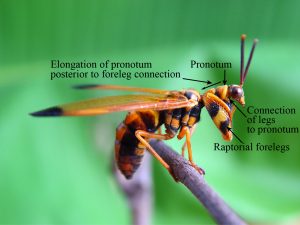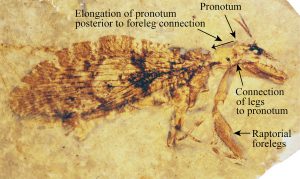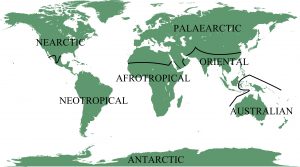Welcome
Hello, my name is James Jepson, I am a palaeoentomologist (fossil insect researcher), who is particularly interested in fossil Neuroptera (lacewings, antlions and allies), Raphidioptera (snakeflies), and Megaloptera (alderflies, fishflies and dobsonflies). Starting last October (2014), I began a two year Alexander von Humboldt Postdoctoral Research Fellowship at the Museum für Naturkunde, Berlin. The fellowship is focused on the evolutionary history of Mantispidae, a fascinating family of Neuroptera. I will be studying their fossil record, revising previously described species that need to be revised, describing new specimens, and working out the relationships of the fossil mantispids to each other, and to their extant (alive today) representatives.
This blog will document my research on Mantispidae, as well as my other projects on fossil Neuropterida, and other fossil insects. Other than my own research, I will be highlighting interesting papers on fossil Neuropterida and palaeoentomology, as well as some random commentary on my life and being an Alexander von Humboldt Postdoctoral Research Fellow. Posts will be published on a fairly regular basis and will be at a level that is understandable to non-specilaists.
First things first – what is Mantispidae?
Mantispidae, commonly known as mantisflies, mantidflies and mantispids, are a member of the order Neuroptera (lacewings). They are easily recognized by a couple of basic features: Raptorial forelegs (very similar to praying mantises (Mantodea)), and a long pronotum (body part behind the head) that is elongated behind the attachment of the forelegs – this is a very important character in identifying the family, which separates it from other closely related neuropterans with raptorial forelegs (see images below). Other identifying features include characters in the wing venation and other morphological characters, which will be discussed in future blog posts. The adult mantispids are predators, highlighted by their raptorial forelegs that are used to catch prey. The larvae of many mantispids are parasites of wasp nests or spider egg sacs. Some of the adult mantispids even mimic (for example, the body colour pattern) the host wasp species giving them protection against predation.
Mantispidae factfile
Order: Neuroptera
Family: Mantispidae
Subfamilies: Symphrasinae, Drepanicinae, Calomantispinae, Mantispinae
Extinct subfamily: Mesomantispinae
There are approximately 410 valid species-group taxa of extant mantispids, and 19 species of fossil mantispids.
Mantispinae is the most diverse subfamily with over 30 genera and over 300 species*, fossil record 5 genera and 6 species.
Followed by:
Drepanicinae: 4 genera and over 35 species*, fossil record: 4 genera and 4 species
Symphrasinae: 3 genera and over 30 species*, fossil record 1 genus and 1 species
Mesomantispinae: fossil record 5 genera and 7 species
Calomantsipinae: 2 genera and 10 species*, fossil record unknown
*approximate numbers tallied from Ohl, 2004
Where are mantispids found?
Mantsipids are globally distributed; however, some of the subfamilies have a more restricted distribution than others. The most cosmopolitan subfamily is Mantispinae found in Oriental, Australasian, Palaearctic, Neotropical, Afrotropical, and Nearctic regions. Fossil Mantispinae are recorded from Dominican Republic, Mexico, France, Baltic region and the UK. The more restricted subfamilies are Symphrasinae found in the Nearctic and Neotropical areas, with a single fossil from Germany. Drepanicinae is recorded in the Neotropics and Australian, with fossils known from Germany, Kazakhstan and Burma. Calomantispinae, which is known from the Nearctic, Neotropical and Australian areas, with no fossils recorded. The extinct Mesomantispinae is known from Russia, Kazakhstan, and China.
This is just a very quick introduction to Mantispidae. In future posts I will delve much deeper into each of the subfamilies and of course into the fossil record of this delightful family of neuropterans.
Reference:
Ohl, M. (2004) Annotated catalog of the Mantispidae of the world (Neuroptera). Contribution on Entomology, International, 5, 133–242.



